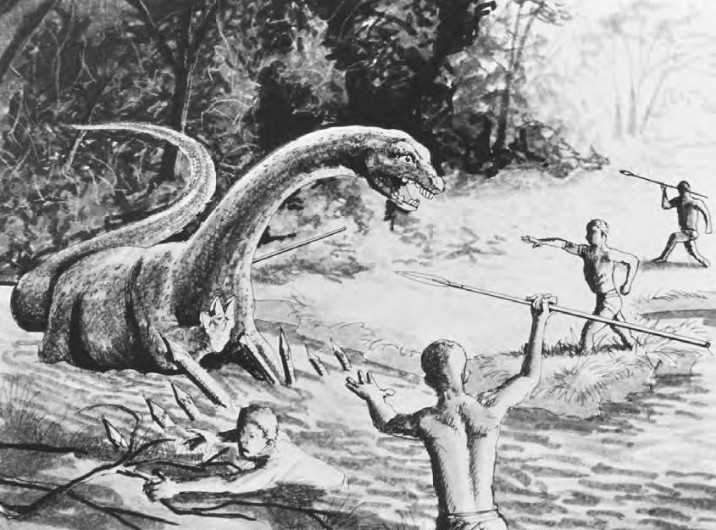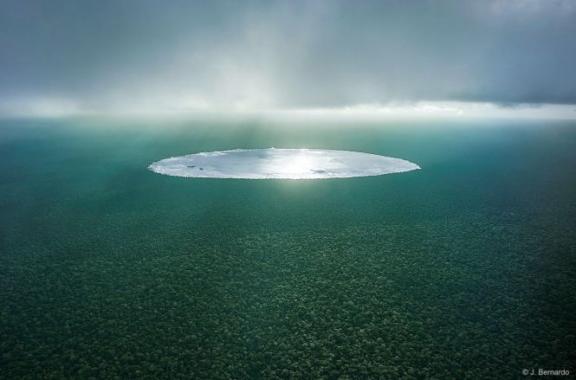In the forest to the north-east of the Republic of Congo lies Lake Télé, a little-known lake to which, with the exception of local villagers, virtually no-one has ever been. For some, it is a mythical lake because it is the source of legends, and can only be visited after an expedition lasting several days in the forest, which is as demanding as it is memorable. Morgane Cournarie, Technical Director of the Congolese branch of the American organisation Wildlife Conservation Society (WCS), made this journey a few months ago in the company of her partner David. Here, she tells us about her immersion in the wilderness. Inspired by this exceptional adventure, we are working on the development of a new expedition to the Congo, which we will tell you more about shortly.
Before getting to the heart of the matter, could you introduce yourself and tell us about your work in the Congo for the American Wildlife Conservation Society?
My name is Morgane Cournarie, and I've been Technical Director for WCS Congo for over three years. WCS seeks to combine the integrity of protected areas with the sustainable use of natural resources, to ensure that both ecosystems and people flourish.
WCS has delegated management of the Nouabalé-Ndoki national park, supports the government in anti-poaching initiatives in the park's peripheral zone, and co-manages the Lac Télé community reserve. My role is to support the teams in the field in implementing activities, to liaise with donors and to contribute to strategic discussions to ensure the efficiency and effectiveness of our conservation support.
Now, can you tell us what Lake Télé is?
Lac Télé is a lake about three kilometers in diameter, located in the middle of the world's largest tropical peat bog forest, and within the Lac Télé Community Reserve. This lake has a certain notoriety among naturalists for several reasons: firstly, its almost circular shape, which is enigmatic. It was long thought to be the result of a meteorite impact, but in the absence of the “chemical signature” of meteorites in the lake's soils, this hypothesis is disputed.
Secondly, this endoreic lake is not connected to the hydrographic network and is therefore very difficult to access - a forty-two kilometer walk from the village of Boha, located on the Likouala-aux-Herbes and “owner” of the lake. As a result, it has been little studied and retains a certain mystery.
Finally, Lake Télé is said to be home to a mythical creature, the Mokelé-Mbembé, a kind of aquatic dinosaur that is part of the myths of local populations. For all these reasons, Lac Télé is truly unique in the Congo Basin.
 Representation of Mokélé-Mbembé
Representation of Mokélé-Mbembé
If walking to a lake in the forest seems like such a simple thing to do, can you tell us why you shouldn't improvise a trip to lake Télé?
From the capital to Lac Télé door-to-door, it takes six days. And that's if the logistics run smoothly - something that never happens in Central Africa! To reach the lake, there's just one track from the village of Boha. This village, located along the Likouala-aux-Herbes river, is the sole holder of the right to access the lake.
To obtain the right of way, visitors must undergo three rituals to receive the blessing of passage. This is followed by a forty-two kilometer walk through the forest with trackers and porters. The lake is surrounded by a three-kilometre-long strip of swamp forest, where the trees have immense stilt roots.
And in this setting, there are no tracks or paths - you have to know every tree to get to the lake. Depending on the season, you'll be knee-deep in muddy water, which makes progress very difficult. Wherever you look, you see untouched forest as far as the eye can see.
Why did you and your partner, David, decide to join us on this stretch of water?
David had known about this lake since his teenage years in literature; I'd only known about it since I started working here in the Congo. Of all the people we met along the way, none had ever set foot in this lake, including people who had lived in Epéna, the nearest small town (and administrative base for the reserve).
Given both our love of wilderness, we couldn't imagine continuing to work on this site without knowing about it. So we decided to mount an expedition to reach the lake.
© Morgane Cournarie / WCS
How did you organize your walking days, and how did you feel during such a journey?
Nine of us set off: two reserve eco-guards, five porters, David and myself. We carried the team's food for seven days, bivouac equipment and water. In fact, we carried out this expedition during the dry season, so as not to be blocked by the high water of the swamp belt. As a result, the forest streams (where you can drink easily) were dry. This was a major constraint, as water was rationed, whereas during forest walks, you sweat a lot! We got up in the morning around 6 a.m., had breakfast, dismantled the tents, then walked, with regular breaks, until around 3/16 p.m., when we set up camp.
When you're walking in the forest, it's pretty physical, and you're mostly looking at... the ground! To put your feet in the right place and avoid falls. During breaks, or when camping, you can hear the forest come alive: birdsong, monkey calls, the sound of foliage... This atmosphere is quite bewitching, all the more so when you know that you're in a little-known area that retains a certain mysterious aura.
You've been in the Congo for a long time now. What has the lake and this walk towards it brought you that's new to you?
A lot! This adventure has been a wonderful discovery of an economic system that I had no idea existed, in the middle of nowhere! It allowed me to cut off all contact with the outside world (no telephone for 7 days, something that hadn't happened to me for years), and to better understand the issues at stake, the way a village in the bush works and the way the communities living in the reserve think.
While everyone tends to propose “tourism” as an activity to ensure a sustainable income for the communities we work with, I know what I'm talking about here when I say that only a handful of visitors will be able to take the plunge each year!
And it has to be said, there's also the pride of having succeeded in this expedition! I'm one of the youngest in the WCS Congo program, but with the most responsibility. This expedition helps to give me a bit of legitimacy in my position.
What is the relationship between the local communities and this place, and the forest that surrounds it?
It's a unique place, with its own mystique. Before being displaced by the French colonial administration in the 1920s, the Boha community lived less than 4 kilometers from the lake. Today, they are more than 40 kilometers from the lake. But every day, for 10 months of the year, these men, women and children go to the lake to fish. They smoke the fish on the spot, and carry it on their backs in crates made of raffia. The load weighs around 40 kilos, and the merchandise is carried back to Boha to be sold in neighboring villages.
Around the lake, there are a few shelters scattered around for fishermen to park while they fill their crates with smoked fish. The lake represents a natural resource of great economic importance to the villagers. But it also has a strong cultural importance: on the way to the lake, small rituals of dance and incantations are performed as you approach the lake.
The villagers don't talk easily about the Mokélé-Mbembé, but once they've got over their reluctance, they're full of stories about this beast - which, in fact, inhabits a small lake connected to Lac Télé, but strictly off-limits...
If you would like to find out more about this program, please contact us.

 Expeditions Unlimited blog
Expeditions Unlimited blog